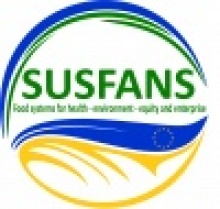Defining a land boundary for sustainable livestock consumption
The need for more sustainable production and consumption of animal source food (ASF) is central to the achievement of the sustainable development goals: within this context, wise use of land is a core challenge and concern. A key question in feeding the future world is: how much ASF should we eat? We demonstrate that livestock raised under the circular economy concept could provide a significant, nonnegligible part (9–23 g/per capita) of our daily protein needs (~50–60 g/per capita). This livestock then would not consume human‐edible biomass, such as grains, but mainly convert leftovers from arable land and grass resources into valuable food, implying that production of livestock feed is largely decoupled from arable land. The availability of these biomass streams for livestock then determines the boundaries for livestock production and consumption. Under this concept, the competition for land for feed or food would be minimized and compared to no ASF, including some ASF in the human diet could free up about one quarter of global arable land. Our results also demonstrate that restricted growth in consumption of ASF in Africa and Asia would be feasible under these boundary conditions, while reductions in the rest of the world would be necessary to meet land use sustainability criteria. Managing this expansion and contraction of future consumption of ASF is essential for achieving sustainable nutrition security.
Take a lookState of play in the SUSFANS project - second period
SUSFANS focuses on a number of core questions: How can we improve the food system of the EU, especially from the perspective of social, environmental and economic sustainability? How can we balance and encompass different views on balanced consumer diets and food and nutrition security in the EU? The research approach is built around the development of a set of metrics, models and foresight tools, which can be used to navigate through decisions on measures for achieving sustainable food and nutrition security. This approach results in a holistic, integrated and coherent vision of what entails sustainable food and nutrition security in the EU in a context of global change. It underpins a perspective on how EU policies on farming, fishing, food and nutrition could contribute to that vision with greater efficacy than today.
Take a lookDeliverable 7.3: Initial model for designing SHARP diets
Designing healthier diets is a complex process which can have substantial public health benefits.The intakes, but also the requirements of multiple important nutrients for different population groups should be taken into account. Moreover, the current dietary preferences of individuals should be considered to promote the acceptability of the diet. Diet models have been developed and used for designing suchhealthier and acceptable diets. The main objective of these models is to determine the optimal quantities of available food items that should be included in a diet to optimize a specific indicator (e.g. maximize a dietary quality index). Additional constraints are defined to improve the acceptability of the calculated diets. These constraints are either in the form of upper and lower limits to the intake of specific food-items or in the form of fixed combinations of food-items in meals. Defining such constraints explicitly is challenging and involves expert knowledge and a substantial degree of arbitrariness. To avoid defining such acceptability constraints we propose a DEA based diet model that benchmarks existing complete diets of a certain population and in our case identifies healthier alternatives. However, the model's flexibility allows for additional dimensions to be included, such as sustainability indicators and prices. The method was applied successfully to benchmark alternative diets of a group of individuals in the Netherlands.
Take a lookDeliverable 3.4: Firms’ strategies in food innovation and reformulation and their responses to regulatory nutritional policies
To deal with health issues related to food consumption, governments are implementing partnerships with the food industry to generate changes in the quality of foods, based for instance on the decrease in salt or fat contents. Some governments employ also more coercive policies, based on the ban of some ingredients, the implementation of quality standards, or advertising regulations. Are these policies focused on the supply side more promising than policies focused on consumers? Are market incentives sufficient to induce voluntary changes by firms or is public regulation of food quality needed to reach public health objectives? The goal of this task will be to deal with these questions, by combining conceptual models and empirical data collection.
Take a lookDeliverable 3.6: The role of market power in the EU food supply chain
There is extensive debate on the position of farmers in the food chain and how global price volatility and increasing concentration up and down the value chain is affecting famers, taking into account increasingly complex vertically-related markets. Market concentration and technological advances are claimed to have shifted the balance of power in the food system to global retailers and other concentrated sectors.
Take a lookDeliverable 9.2: Enhanced modelling of sustainable food and nutrition security: food consumption and nutrition behaviour of European households
This deliverable describes the enhanced modelling of food consumption and nutrition behaviour under constraints with a focus on European households and population health impacts of changes in diets. The demand side enhancements enable the analysis of SFNS over time and in response to (policy) shocks.
Take a lookDeliverable 5.3: Innovation pathways towards more sustainable production and consumption in the fruit - vegetable supply chain and their uptake in the SUSFANS models
Fruit and vegetable consumption is below recommended levels and should increase to come closer to a more healthy and sustainable diet in Europe. The aim of this report is to identify innovation pathways in the fruit and vegetable chain from a consumer perspective. The deliverable shows the different elements of a consumer perspective, their relevance and above all the need to combine consumer, production and circular perspectives on innovation to support fruit and vegetables consumption. To understand or even stimulate consumption behaviour a wide array of drivers need to be taken into consideration, which relate to the individual (biological, demographics, psychological), the product, the interpersonal, physical environment and policy. These are represented in consumption-related innovations such as: targeting, motivating, contextual, communicating and acceptance of innovations; product related innovation such as: product, production, and package; and circular innovations (in particular around reducing food waste). This paper is meant to inspire, raise awareness, and continue the discussion on a strengthened consumer perspective in the innovation strategies, foresight and modelling work in SUSFANS.
Take a lookDeliverable 9.3: Enhanced modelling of sustainable food and nutrition security: food supply and use of scarce resources
This deliverable reports on Task 9.3 and describes the enhanced modelling of food supply and the use of scarce resources. The enhancements improve the analysis of sustainable food and nutrition security in response to (policy) shocks with regard to coverage and accuracy of sustainability metrics provided by long-run modelling tools in SUSFANS.
Take a lookDeliverable 10.1: Quantified SUSFANS scenario drivers ready to be used by the modeling toolbox
This deliverable quantifies the most relevant scenario narratives spanning across the range of future challenges for the EU sustainable FNS for use in the SUSFANS toolbox.
Take a lookDeliverable 6.2: A systematic review of existing EU-wide scenarios related to the EU sustainable food and nutrition security, identification of most salient features, and resulting synthesis scenarios for exploring sustainable diets
Scenarios as a tool to reflect on future pathways to sustainable food and nutrition security. Building on existing foresight and scenario exercises and identifying their most salient features in order to be combined in SUSFANS scenarios able to assess the EU policy goals for food systems.
Take a lookDeliverable 8.4: Early warning systems for commodity markets
An agricultural commodity price and price volatility forecasting modelling system has been developed and applied for four agricultural commodities to perform forecasts on a horizon spanning from three months to one year. The forecasting system can be used as an early warning system based on seasonal and decadal simulated weather and climate forecasts in combination with financial and macro-economic projections.
Take a look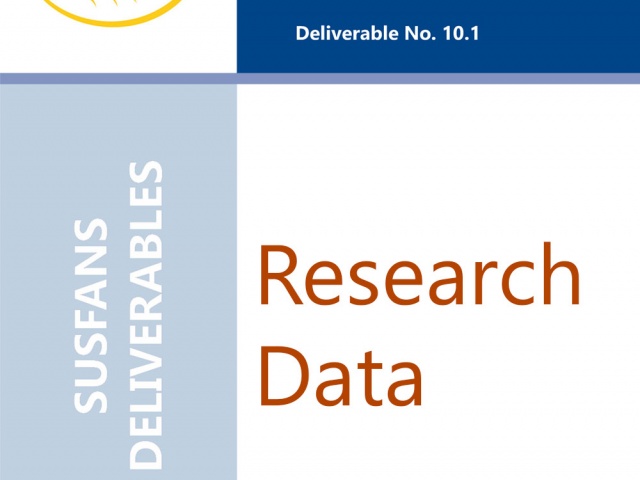
WP10: Quantified SUSFANS scenario drivers ready to be used by the modeling toolbox (PPTx)
Concept of SUSFANS Foresight Contextual scenarios Map of stakeholder scenarios to contextual scenarios Challenges to sustainable FNS in Europe Quantification of scenario drivers (visuals) Key assumptions for EU & World: Population growth, economic growth, food distribution inequality, technological change (crops and livestock), climate change impacts, climate change mitigation, policies (trade, agriculture, fishery) See: data file (open access)
Take a look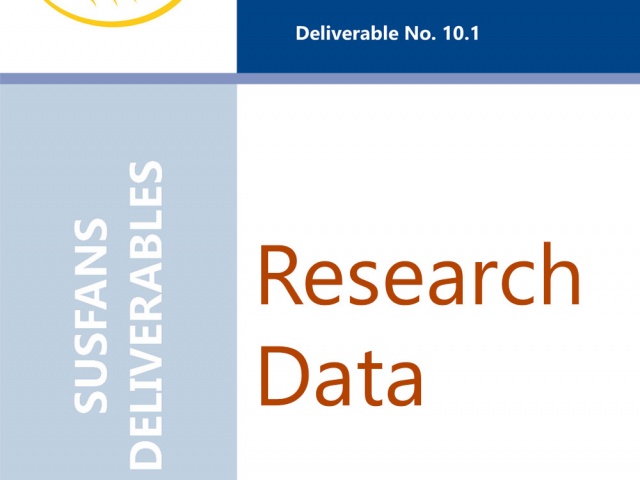
WP10: SUSFANS Drivers Database (ZIP)
Complete download of data in CSV format, metadata and overview
Take a look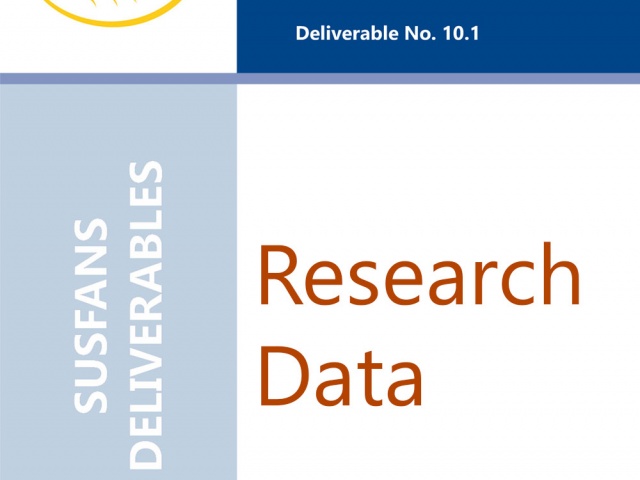
WP 10: Meta data (XLSX)
Take a look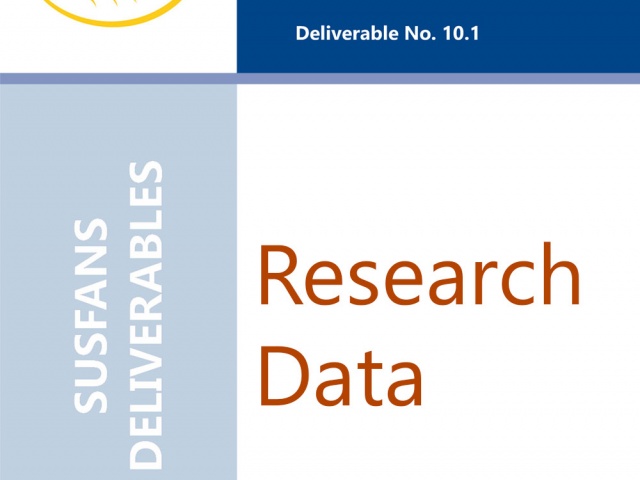
WP10: SUSFANS Drivers Database (XLSX)
Supports a quick overview of the database. Datatype: Excel (*.xlsx)
Take a lookNewsletter 3
The third newsletter covers the progress of the project. One major achievement is that SUSFANS has entered into a partnership with FIT4FOOD2030, a new project for building the platform for dialogue on the FOOD2030 agenda of the EU. The newsletter includes a short summary of the year 2017 and research insights.
Take a lookDeliverable 7.1: The initial model to design SHARP diets, based on nutritional adequacy and preliminary sustainability metrics
This paper collates food and nutrient intake data from Denmark, Czech Republic, Italy and France. Nutritional adequacy of the diets will be assessed using a protocol developed in WP2. This is the basis for the initial model to design SHARP diets, based on nutritional adequacy and preliminary sustainability metrics.
Take a lookDeliverable 5.1: Baseline sustainability assessment of the current state of livestock/fish and fruit/vegetables supply chains
To assess different possible future directions for the EU food system, potential pathways based on a set of innovations need to be identified. The aim of WP5 is to define different pathways towards more sustainable and healthy diets within the EU, without negative implications in the rest of world. This first report of WP 5 makes the case for the two selected case studies based on the current situation, provides as first set of innovation pathways and explores the use of metrics in a spider diagram to assess sustainable FNS. The innovations focus on two cases, ‘livestock and fish case’ and ‘the fruit and vegetable case’. For both supply chains there are concerns regarding the current European diet (too high consumption of livestock and too limited consumption fruit, vegetables and seafood), whereas for livestock and fish production there are also pressing environmental concerns (land use, GHG emissions, fish stock depletion).
Take a lookDeliverable 1.4: A modelling strategy for quantifying the sustainability of food and nutrition security in the EU
This deliverable outlines a modelling strategy for quantifying metrics and methods for quantifying the sustainability of EU FNS. SUSFANS models are assessed in terms of data needs, their limitations and the questions they can address related to sustainable FNS in the short term and the long term. This assessment sets the scene for operationalization of the SUSFANS Toolbox.
Take a lookDeliverable 1.3: Sustainability metrics for the EU food system: a review across economic, environmental and social considerations
One of the main objectives of the SUSFANS project is to develop a set of concepts and tools to help policy and decision makers across Europe make sense of the outcomes and trends of the EU food system. This paper proposes a set of metrics for assessing the performance of the EU food system in delivering sustainable food and nutrition security. The performance metrics have been built up through the aggregation of a wide range of variables, which together help to monitor the achievement of four overarching policy goals for the EU food system, namely a balanced diet for EU citizens, reduced environmental impacts, competitive agri-food businesses and equitable outcomes of the food system. The project decided to take a hierarchical approach to aggregating from Individual Variables to Derived Variables to Aggregate Indicators to Performance Metrics. This approach aims at marrying the notion that decision makers want only a small but powerful set of metrics to communicate the findings of the assessment, with the need to substantiate these metrics with the best available data from a large number of sources in a transparent way. In this deliverable the current set up of the performance metrics focus on each individual policy goal. In a related report, the team explores if and how the performance metrics presented here can be quantified using available data and modelling tools, and which of the models of the SUSFANS tool box can estimate which ones of the performance metrics and how (report D1.4). In a final step the SUSFANS team will bring all performance metrics together in an integrated set that will allow a view across all four policy goals and thus across all aspects of sustainable food and nutrition security (forthcoming report D1.5). Further work is the quantification of metrics using case studies and prospective scenario analysis. In addition to their use for monitoring, the proposed metrics are geared towards quantification using selected computational modelling tools. As such, SUSFANS aims to assist in foresight on and the evaluation of transformative changes in the food system with rigour and consistency.
Take a look